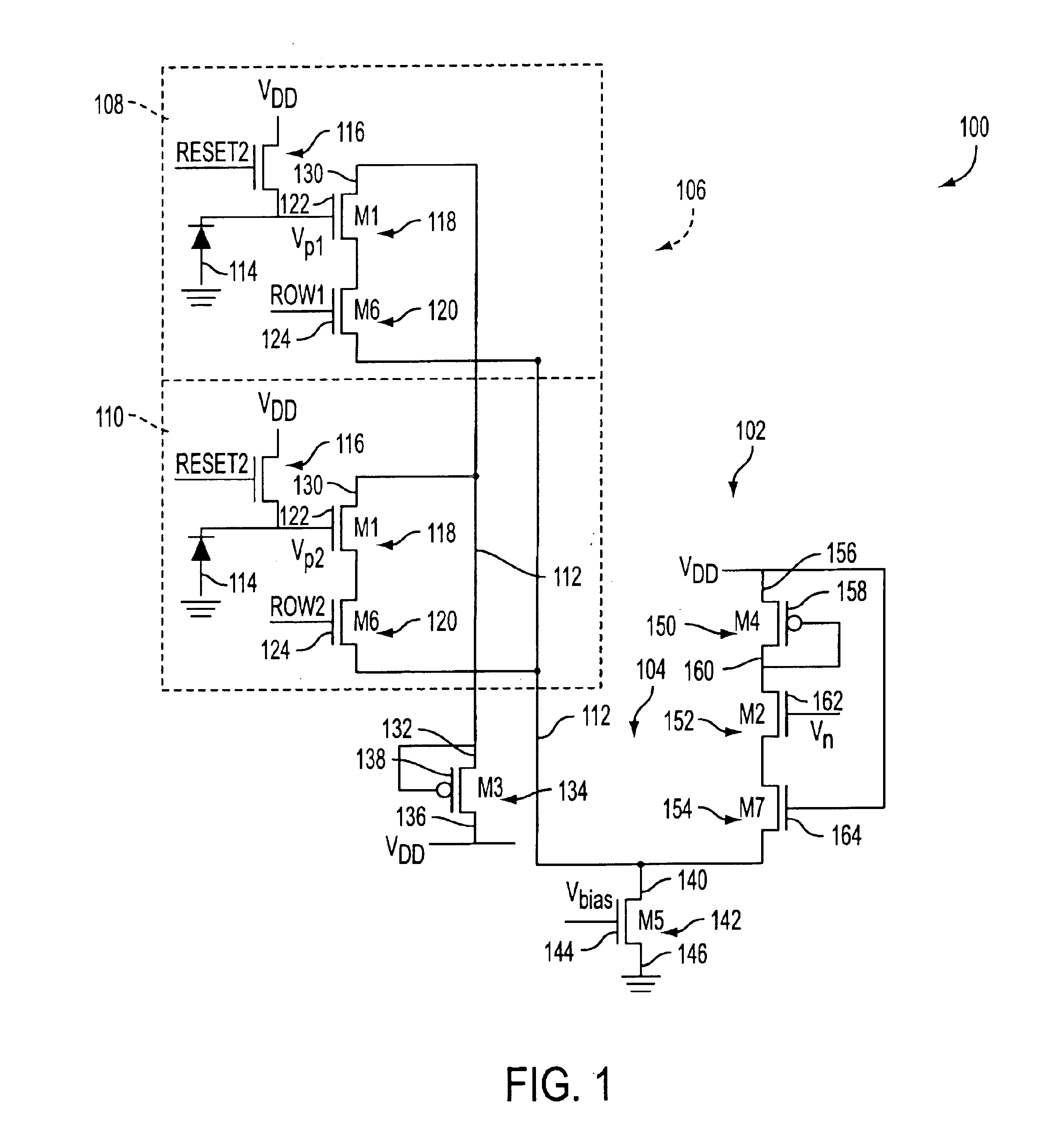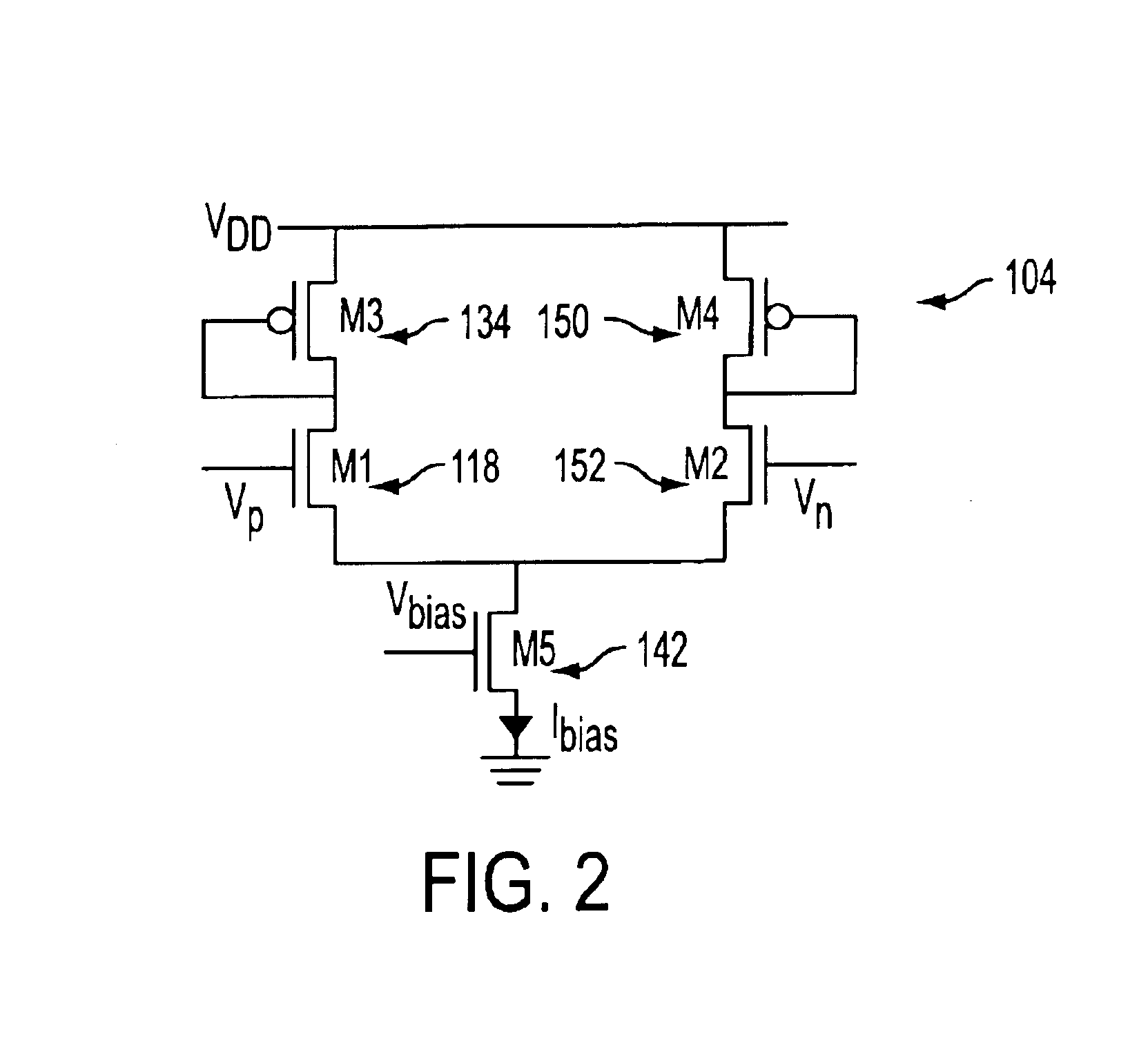Active pixel sensor (APS) readout structure with amplification
a technology readout structure, which is applied in the field of active pixel sensor (aps) imaging devices, can solve the problems of limiting the dynamic range of the sensor, consuming a considerable amount of the chip area, and sacrificing the signal gain of the aps sensor
- Summary
- Abstract
- Description
- Claims
- Application Information
AI Technical Summary
Benefits of technology
Problems solved by technology
Method used
Image
Examples
Embodiment Construction
An embodiment is shown in FIG. 1. The readout structure 102 of an active pixel sensor (APS) 100 includes an amplifier circuit 104. The APS includes an array 106 of independently addressable pixels arranged in n rows and m columns. FIG. 1 illustrates two of the pixels 108, 110 that are connected to a column of line 112 of the pixel array. Pixel 108 is in row 1 and pixel 110 is in row 2. Each pixel includes a photodetector 114, such as a photogate, photodiode or pinned photodiode, a reset transistor 116, a source-follower output transistor 118 (denoted M1), and a row select transistor 120 (denoted M6). The gate 122 of the output transistor is connected to a pixel voltage provided by the photodetector. The gate 124 of the row select transistor 120 is connected to a row enable voltage which is set HIGH when the pixel is being read out, thereby allowing the voltage on the output transistor to be passed to the column line 112. The output transistor 118 and row select transistors 120 may b...
PUM
 Login to View More
Login to View More Abstract
Description
Claims
Application Information
 Login to View More
Login to View More - R&D
- Intellectual Property
- Life Sciences
- Materials
- Tech Scout
- Unparalleled Data Quality
- Higher Quality Content
- 60% Fewer Hallucinations
Browse by: Latest US Patents, China's latest patents, Technical Efficacy Thesaurus, Application Domain, Technology Topic, Popular Technical Reports.
© 2025 PatSnap. All rights reserved.Legal|Privacy policy|Modern Slavery Act Transparency Statement|Sitemap|About US| Contact US: help@patsnap.com



